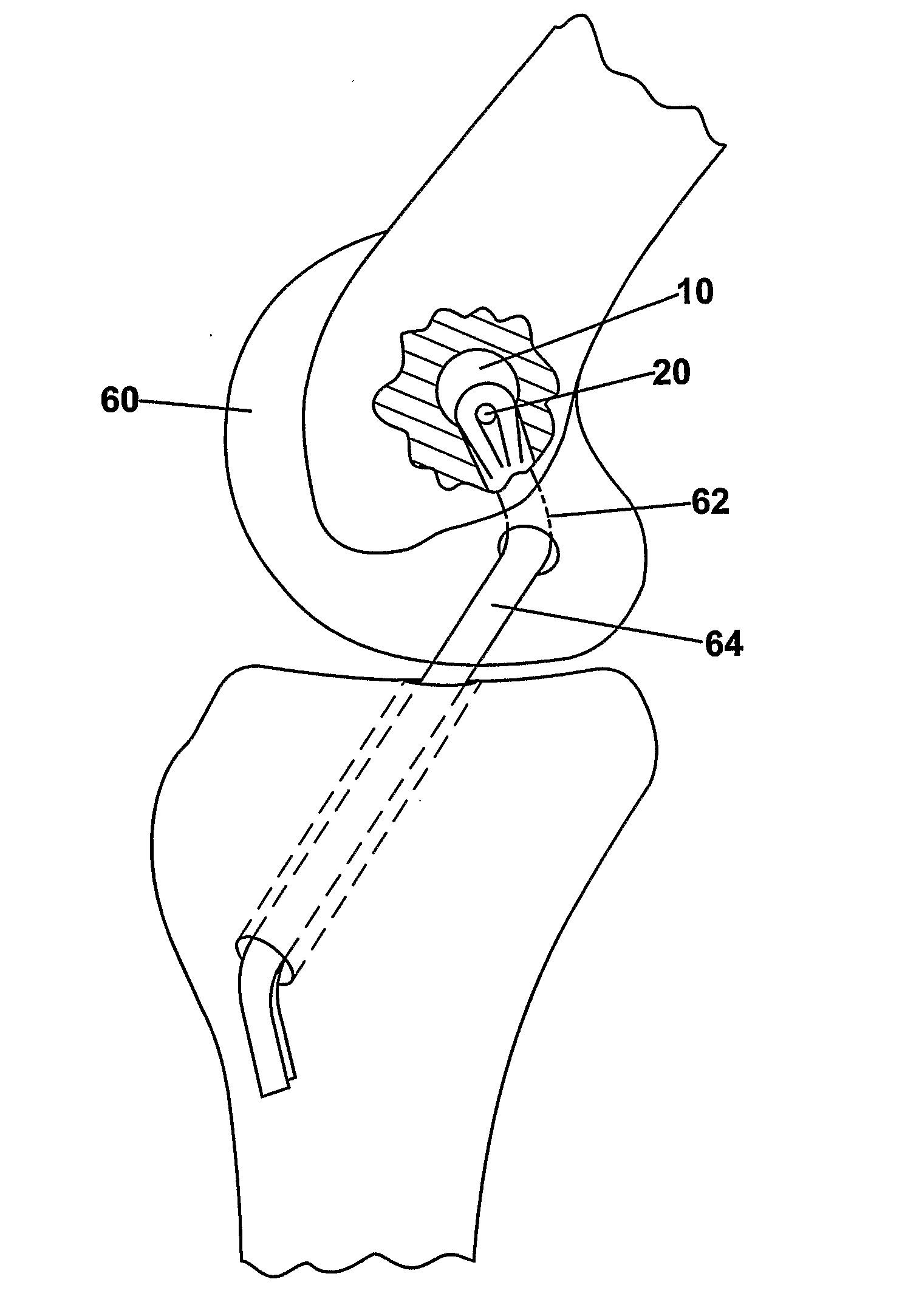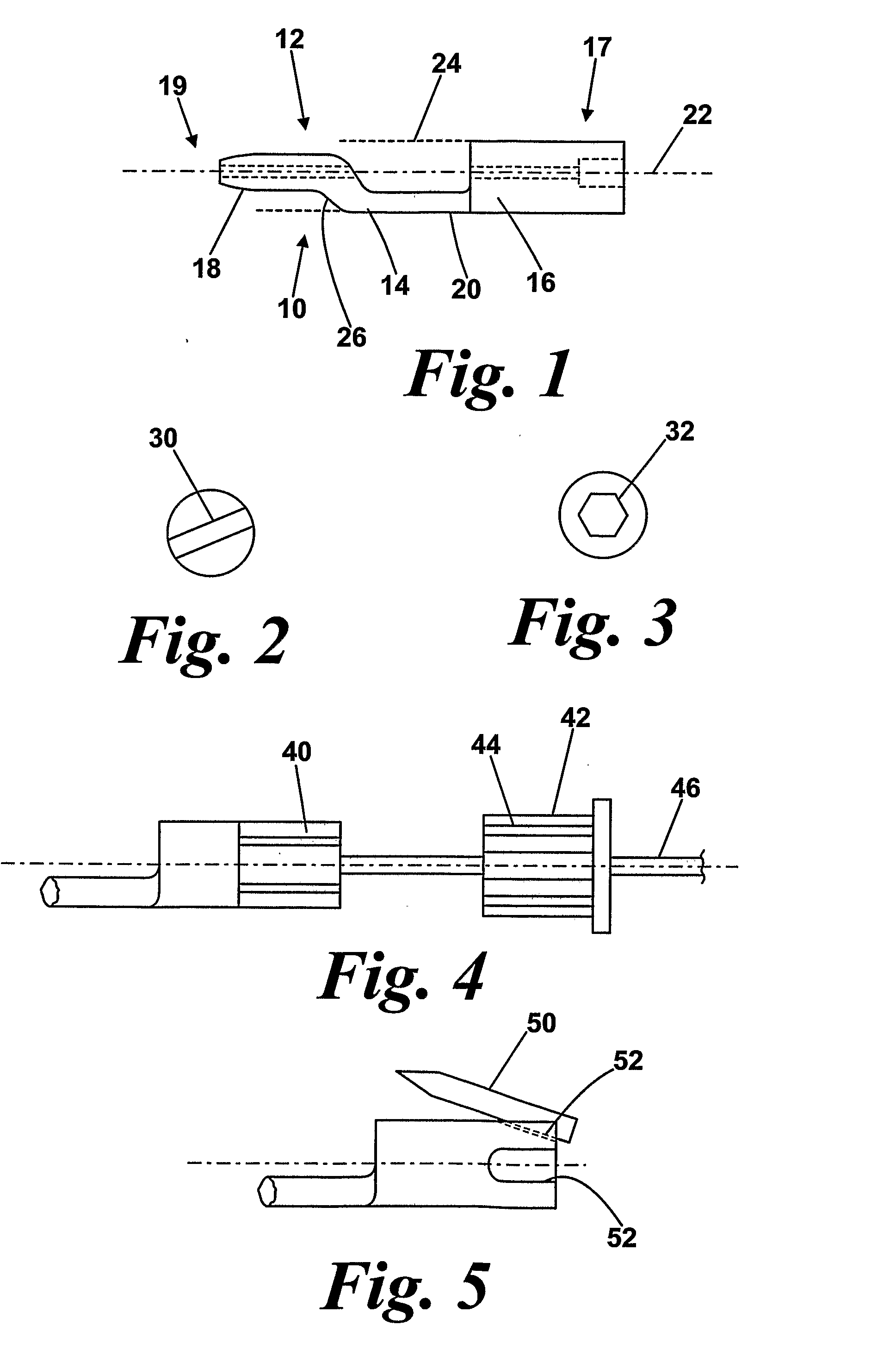Adjustable ligament graft fixation
a technology of ligament grafts and fixing joints, which is applied in the field of ligament grafts, can solve the problems of inability to adjust the tension of the graft at the end of the surgical procedure, loss of initial tensile graft strength, and increased susceptibility to creep, and achieves the effects of reducing the strain or damage of the graft at the anchor interface, and reducing the risk of fractur
- Summary
- Abstract
- Description
- Claims
- Application Information
AI Technical Summary
Benefits of technology
Problems solved by technology
Method used
Image
Examples
example
[0042]Frozen cadaver knees with a mean age of 68.5 years, range 56-81, were used. Specimens were approximately 15 cm long above and below the joint line, and were sealed in polyethylene bags and stored at −20° C. After thawing the knees were dissected preserving only bone, joint, menisci, joint capsule and ligaments. The cut ends of the tibia and femur were cast into steel tubes using polymethylmethacrylate bone cement to provide stable fixation while testing.
[0043]Fresh frozen bovine extensor tendons were used as ACL grafts. These were harvested and trimmed into 5×200 mm long strips. Bovine extensor tendon grafts were used because their biomechanical properties are similar to human hamstring grafts. The reconstruction protocol used, including tunnel placement, tunnel orientation, magnitude of pretension force and degree of flexion at fixation was based on the ESSKA 1996 consensus workshop [Amis, Knee Surg. Sports Traumatol. Arthrosc. 6 Suppl 1:S2-12]. Other aspects of this work, su...
PUM
 Login to View More
Login to View More Abstract
Description
Claims
Application Information
 Login to View More
Login to View More - R&D
- Intellectual Property
- Life Sciences
- Materials
- Tech Scout
- Unparalleled Data Quality
- Higher Quality Content
- 60% Fewer Hallucinations
Browse by: Latest US Patents, China's latest patents, Technical Efficacy Thesaurus, Application Domain, Technology Topic, Popular Technical Reports.
© 2025 PatSnap. All rights reserved.Legal|Privacy policy|Modern Slavery Act Transparency Statement|Sitemap|About US| Contact US: help@patsnap.com



